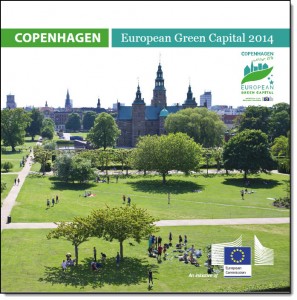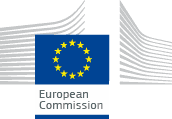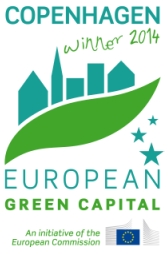Not only among politicians and in the business community, but also among the 560,000 inhabitants of the Danish capital, 1.2 million in Greater Copenhagen, there is hardly any doubt what Copenhagen will be in 2025: the first CO2 neutral capital in the world. The EU describes this goal as “ambitious”, but is at the same time so impressed by the city’s strategy that it awarded it the title “European Green Capital 2014”.
The disappointing outcome of the COP15 top meeting at the end of 2009 in Copenhagen had a strange effect on the Danes: They decided to go their own way to a sustainable and CO2 neutral future. The capital took the lead, in some ways even ahead of the national government. In 2011, the city released a Climate Adaptation Plan as “our starting point for incorporating the necessary climate adaptation into our thinking in all areas of the city’s development in good time” under the headline “Copenhagen must be equipped for the weather of the future”. As a result, Copenhagen is – at least on paper – prepared for more drastic climate changes.
These efforts form part of the platform for the jury’s decision to choose Copenhagen as the European Green Capital 2014, concluding “that Copenhagen is a highly successful role model for the green economy, with an efficient communication strategy and the commitment required to develop its role as a model for Europe and beyond”. The jury based its decision on twelve different criteria, beginning with Local contribution to global climate change, which gave a 2nd place, followed by Local transport (1st), Green urban areas incorporating sustainable land use (2nd), Nature and biodiversity (2nd), Quality of local ambient air (5th), Noise pollution (4th), Waste production and management (3rd), Water consumption (2nd), Waste water treatment (1st), Eco-innovation and sustainable environment (2nd), Environmental management of the local authority (1st) and – finally – Energy performance (1st). With this ranking, the Danish capital put Bristol and Frankfurt in 2nd and 3rd place.
The jury was especially impressed by the Copenhagen Green Business Model. It commented: “This example of green economic development tackling environmental, economic and social concerns has high potential for replication in the region around the city and beyond.” Another core item of this strategy is the public-private partnership. “Through dedicated forums the City is working with green companies, universities and organizations on developing and implementing green growth.” The jury mentions the North Harbour project as an example that includes the “Green laboratory – the blueprint for green growth,” which will focus on green technology that can be transferred to other towns and cities.
Copenhagen does not only have the ambition to become the first CO2 neutral capital in the world, but also to be the world’s best city for cyclists by 2025. Already today, about half of Copenhagen’s population use bicycles to get to work or education. The newly appointed technical and environmental major of Copenhagen, Morten Kabell from the Red-Green Alliance, will build more bicycle lanes close to car lanes but separated from them, and will broaden bicycle lanes affected by traffic congestion in the mornings and afternoons. Over the past three years, Copenhagen has invested more than 52 million euro in urban cycling. The future plan is that no Copenhagener should live farther away from a park or a beach than a fifteen minute walk.
In order to secure the supply of district heating and electricity in a sustainable way, the city-owned Greater Copenhagen Utility has acquired the Amager power plant, situated close to the city, from the state owned Swedish Vattenfall. The two aggregates are today partly coal-fired, which is supposed to change to biomass-fired. Already in the near future they will replace older power plants. Since the utility is also expanding on wind power, its CEO Lars Thorkildsen sees the utility making a major contribution in the future to the government’s goal of obtaining fifty percent of Denmark’s electricity from wind power by 2020. The energy industry welcomes the return of local public utility owners.
The new Green Capital has already found its way to Wikipedia, where “Copenhagenisation” is described as “a design strategy centred around making a city more accessible to cyclists and pedestrians and less car dependent – it is how to improve the quality of sustainable urban life.”
Copenhagen celebrates being the Green Capital of Europe. As a side effect, the Danish capital can now leave the shadow of its great competitor and rival in the North, Stockholm, which in 2010 became the first Green Capital of Europe.
More information about Green Capital of Europe:
|


